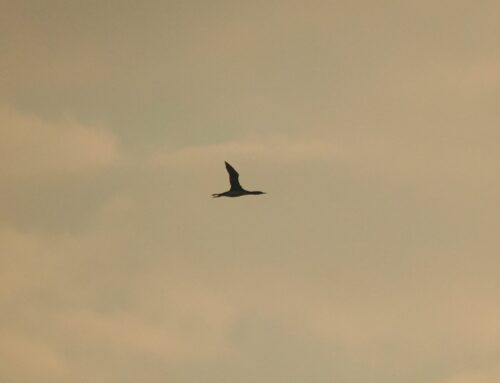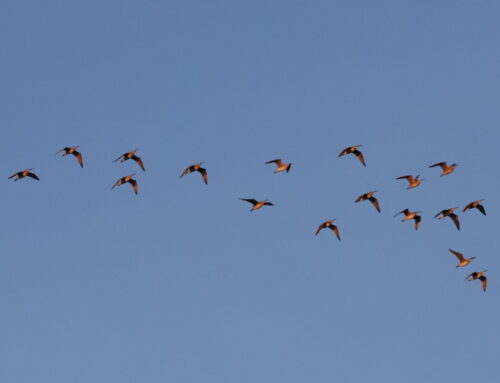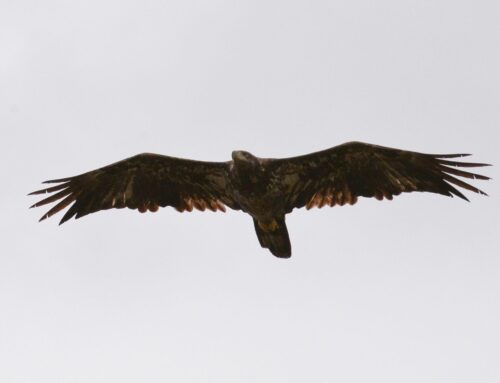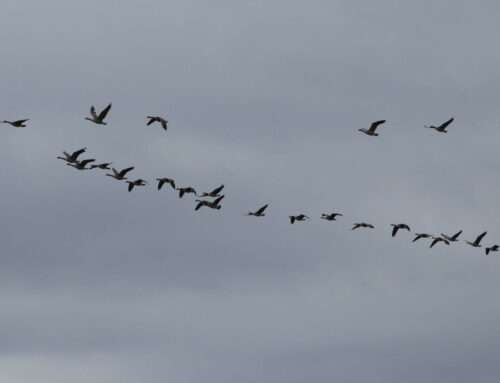This coming Saturday, Oct. 17, is October Big Day! This is an annual project from the Cornell Lab of Ornithology to celebrate birds and birding. Participation is simple: see birds and record them in eBird. A goal of October Big Day is to have 25,000 participants. With interest in birds and birding quickly growing worldwide, this seems like an achievable goal being that there were over 20,000 participants last year.
The goal of a Big Day is to see as many birds as one can in a 24-hour period. This can be a simple feat where you go about your day and take some extra time to record all the birds you notice. Though we often don’t think about it, rarely does a day go by without us seeing or hearing a bird, even if we’re not intentionally looking for them. For me, this is one of the big draws towards birds. Everywhere we go, there is wildlife around us, birds being some of the most charismatic and observable ones that tell compelling stories.
On the other end of things, you can meticulously plan your big day by visiting different locations and habitats at intentional times to target specific species. I’d be amazed if any birder in the area on a Big Day didn’t stop by Whitefish Point. Many of the species we see are much more difficult to observe elsewhere, and the likelihood of rare birds during October is traditionally high. Even if you’re not planning a Big Day this Saturday, I encourage you to at some point. It involves a depth of involvement with what we know about birds that is very engaging. For instance, are there species you’re only likely to encounter at certain parts of the day? And if so, in certain areas? At dark, are there birds you might be able to find, and if so, where? The songbirds are often most active during the morning hours, while you can wait until the afternoon for the raptors to take to the skies or swing by a harbor at almost any point in the day to find gulls. This planning pushes you to think about individual species of birds and how they act. You’ll consider the habitats around you and what they might contain. It’s a treasure hunt where you draw the map.
Of course, it doesn’t stop with Big Days. Many birders will pursue Big Weeks, Months, and Years. This can be restricted to a location, a county, a state, a country, or wherever you’d like. What you’ll learn through these experiences and the knowledge you’ll utilize only grows with the scope of your attempts. You’ll likely encounter other birders through your efforts and consult the wonderful birding community. But honestly, why we’re all really out birding is because of all the fame and fortune that comes with holding birding records…
The experiences we have along the way connect us to birds and the natural world. This October Big Day is part of the Global Bird Weekend. This event is part of an appeal by Birdlife International to end illegal bird trade. Much of the world was shocked when the headlines told us nearly three billion birds have been lost in the past thirty years. The study making this statement outlines many different threats to bird populations: habitat loss being the most impactful among an array of other pressures, including the illegal bird trade. The current ongoing pandemic has brought attention to what threats the wildlife trade has for us; the impacts on wildlife are much larger and far-reaching.
Thomas Lovejoy, referred to as the “godfather of biodiversity,” is often quoted saying, “If you save the birds you solve most of the big problems of the world.” At a lecture this August, he continued this statement with “to take care of the birds you need to take care of most of the big problems in the world,” a much more demanding statement. It’s often said that we will conserve only what we love, and we will love only what we understand. Through connecting with birds, we connect with the natural world and deepen our relationship with it. With this relationship, let’s give back to a world that has given us everything.
Text by Fall Waterbird Counter Steve Backus






